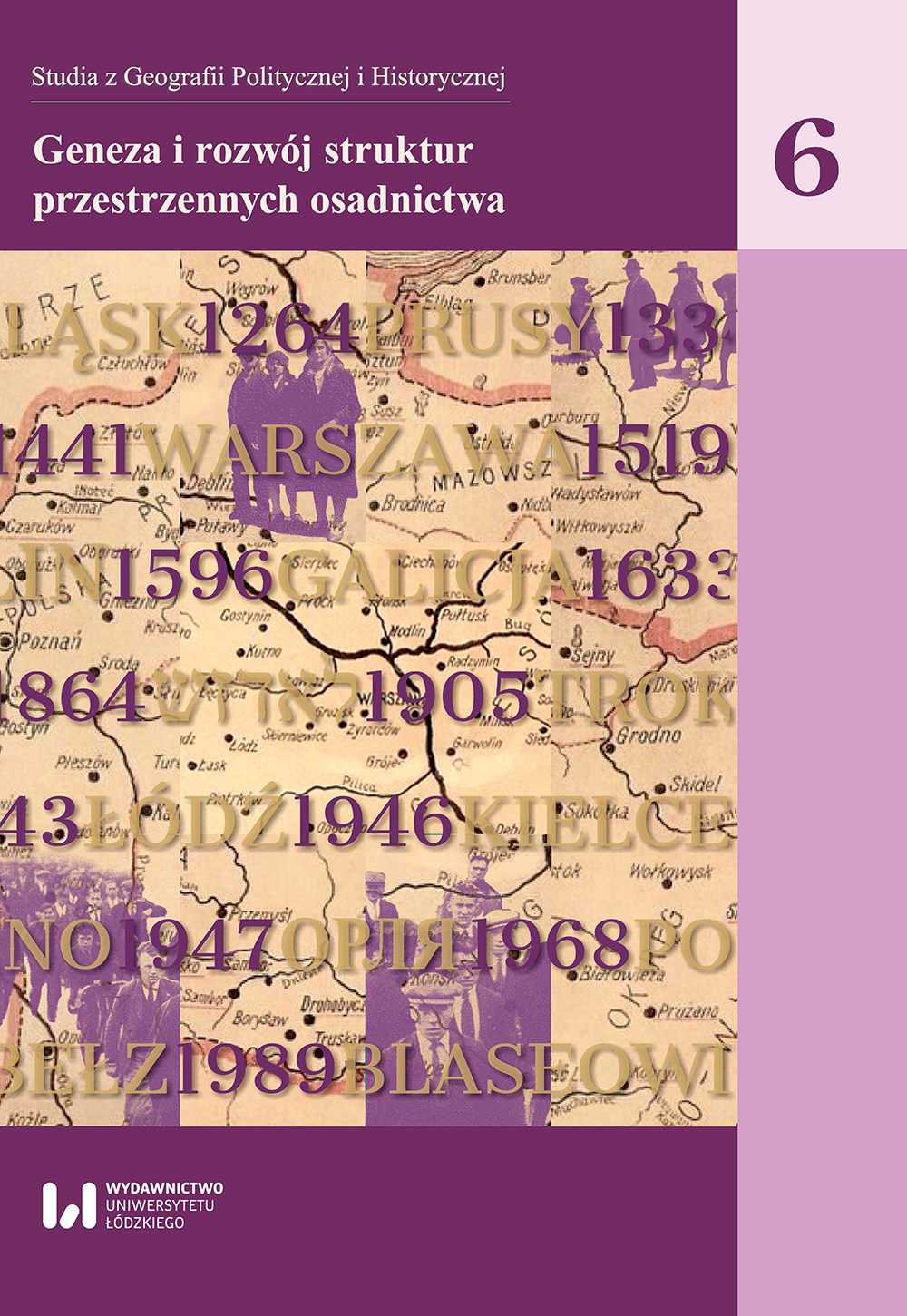Rozwój przestrzenny i przemiany morfologiczne osiedli Wrocławia wyrosłych wokół dawnych wsi kmiecych
Spatial development and morphological transformations of districts arisen around former peasant villages. The case study of the Wrocław city
Author(s): Barbara Miszewska, Robert SzmytkieSubject(s): Geography, Regional studies, Regional Geography, Maps / Cartography
Published by: Wydawnictwo Uniwersytetu Łódzkiego
Keywords: morphological transformations;spatial development of the city;urban morphology;peasant villages;Wrocław;przemiany morfologiczne;rozwój przestrzenny miasta;morfologia miasta;wsie kmiece;Wrocław
Summary/Abstract: Between the years 1928 and 1973, three towns (Brochów, Leśnica, Psie Pole) and over 50 villages were incorporated into the borders of Wrocław city. It resulted in the growth of the administrative area of the city from 49.2 to 292.8 km2. Amongst the settlements incorporated into the city borders, it is possible to recognize the vegetable, peasant and farm villages. In most cases, former villages became genetic cores, around which current districts of the city were developed. Due to the diversified dynamics and the complex character of morphological transformations, the peasant villages deserve particular attention. An analysis of the spatial development and the main tendencies of morphological transformations of settlements developed around the peasant villages is the main purpose of this article. The majority of peasant villages are located in the western and southern parts of the city. Villages taken into account in the analysis differ in the progress of development processes, morphological diversification of settlements developed around former villages and in the transformations of the habitat of the village (from fully preserved forms to the forms with partly or entirely changed farm buildings). In the case of peasant villages, the morphological transformations have a different scale, from the phase of the minimal transformations (e.g. Jerzmanowo), to the phase where the initial form of the village is becoming blurred and the inter-urban “conglomerate” is developing (Ołtaszyn – Wojszyce).W latach 1928–1973 w granice Wrocławia wcielono trzy miasta (Brochów, Leśnicę i Psie Pole) oraz ponad 50 wsi, w wyniku czego powierzchnia miasta wzrosła z 49,2 do 292,8 km2. Wśród przyłączonych do miasta miejscowości można wyróżnić wsie: warzywnicze, kmiece i folwarczne. W większości przypadków stały się one jądrami genetycznymi, wokół których wyrosły obecne osiedla miasta. Na szczególną uwagę, z uwagi na zróżnicowane tempo i złożony charakter przemian morfologicznych, zasługują zwłaszcza wsie kmiece. Celem artykułu jest analiza rozwoju przestrzennego i głównych tendencji przemian morfologicznych osiedli powstałych w sąsiedztwie wsi kmiecych. Większość z nich położona jest w zachodniej i południowej części miasta. Ich wybór podyktowany był zaawansowaniem procesów rozwoju i zróżnicowania morfologicznego osiedli powstałych wokół dawnych wsi i stopniem przekształcenia pierwotnego siedliska wsi (od zachowanej po częściowo zachowaną i całkowicie wymienioną zabudowę zagrodową), od fazy minimalnych zmian pierwotnego układu (Jerzmanowo) po fazę zacierania formy inicjalnej i powstawania swoistej wewnątrzmiejskiego „zlepieńca” (Ołtaszyn – Wojszyce).
Journal: Studia z Geografii Politycznej i Historycznej
- Issue Year: 2017
- Issue No: 06
- Page Range: 51-70
- Page Count: 20
- Language: Polish

